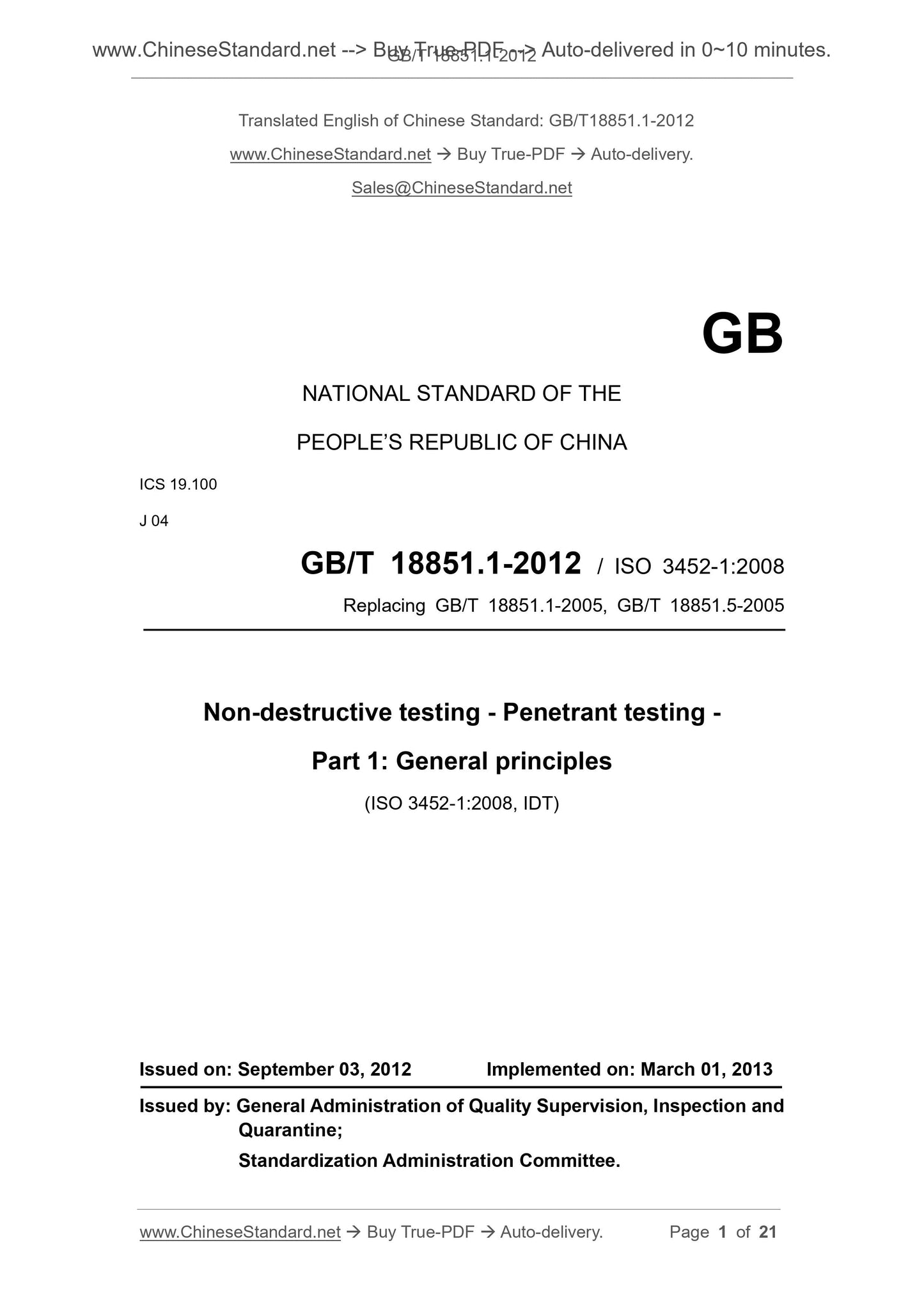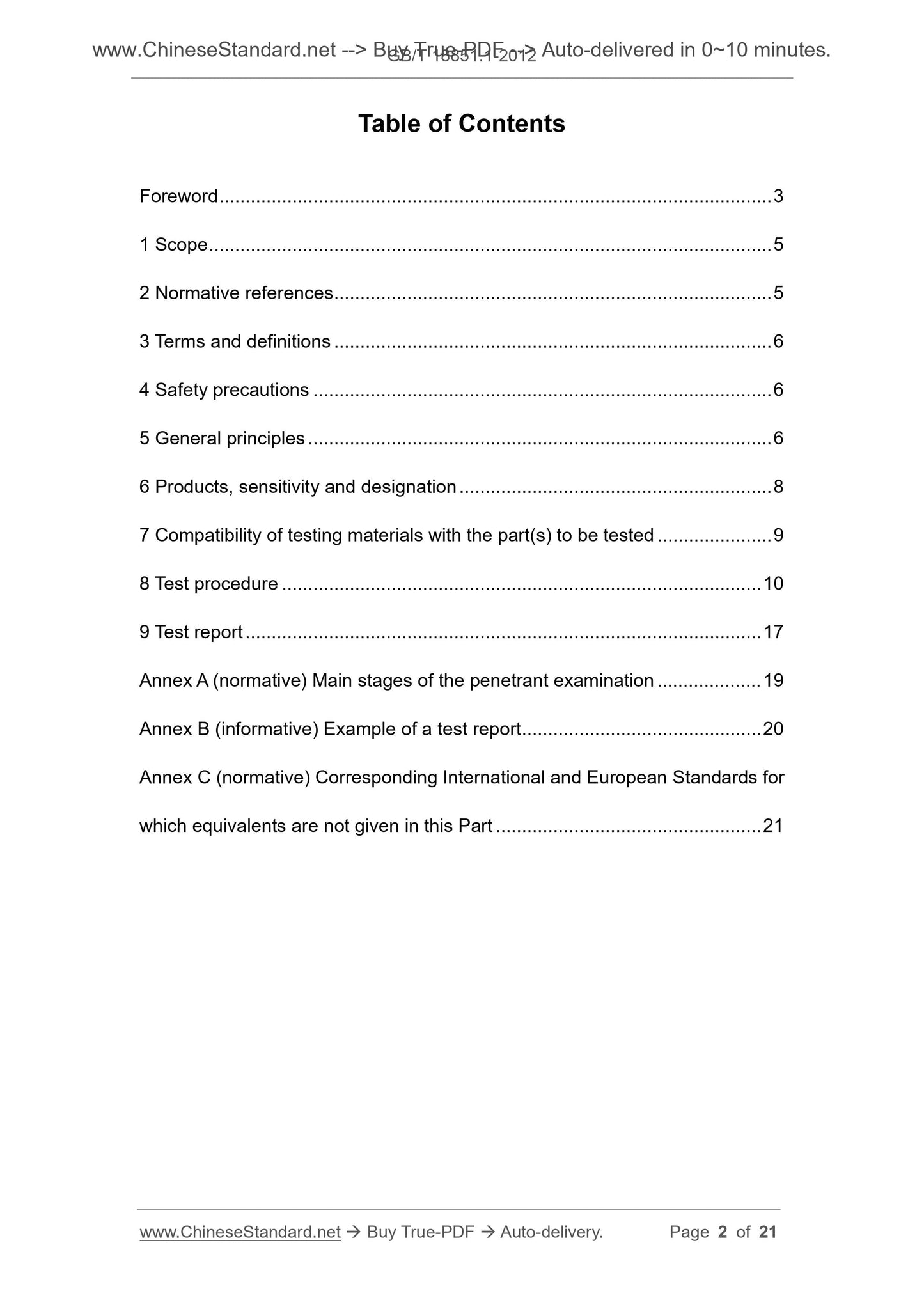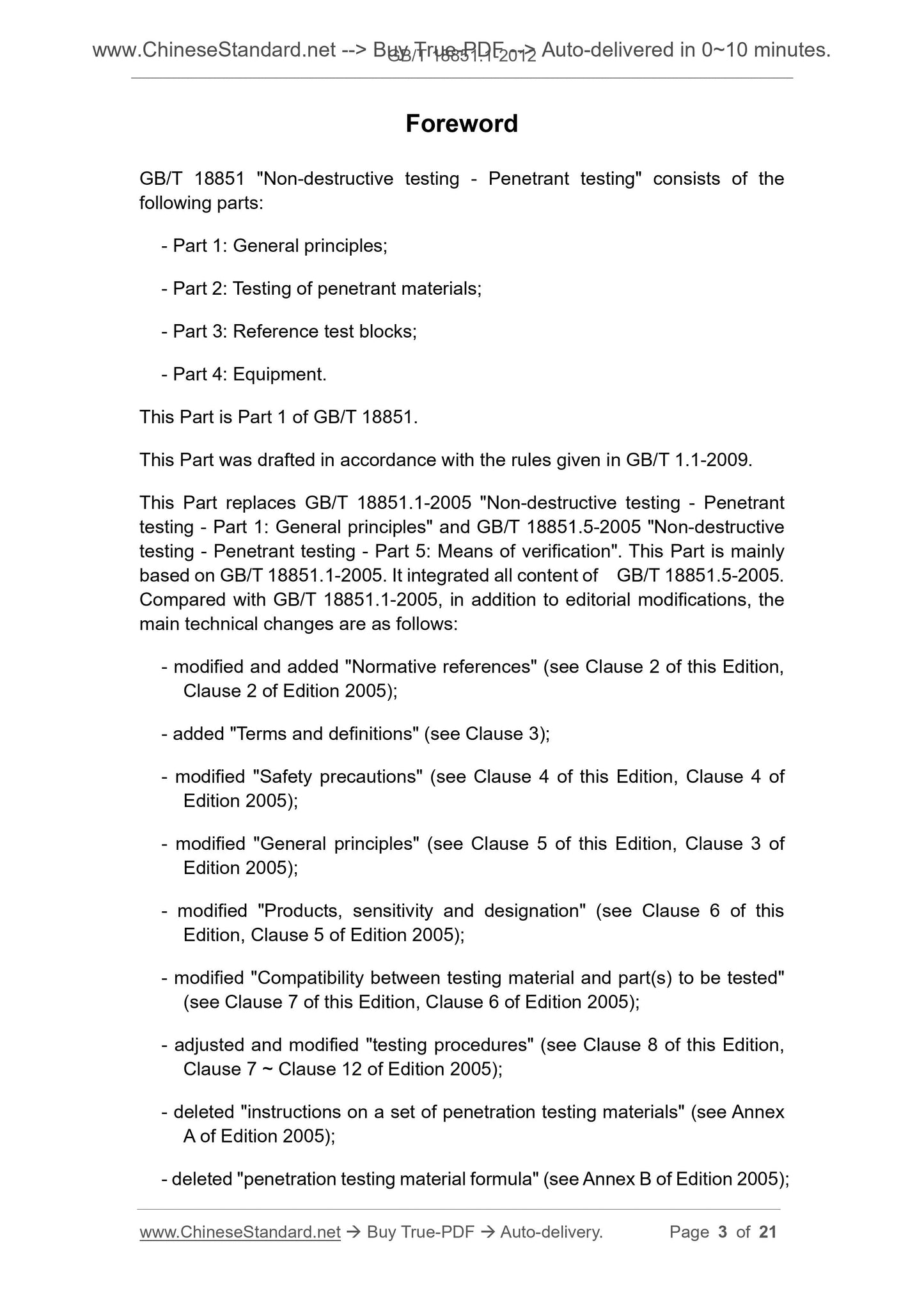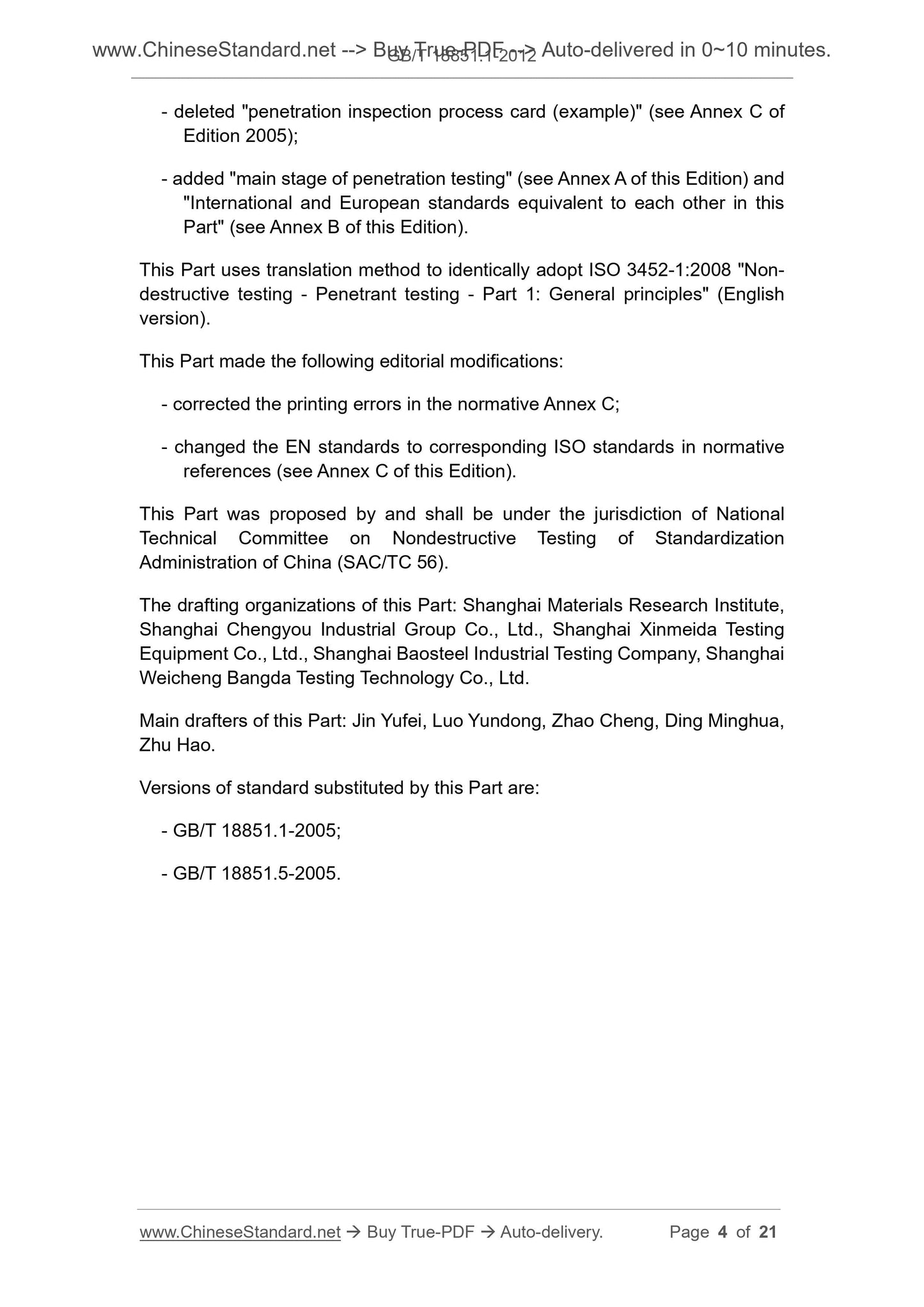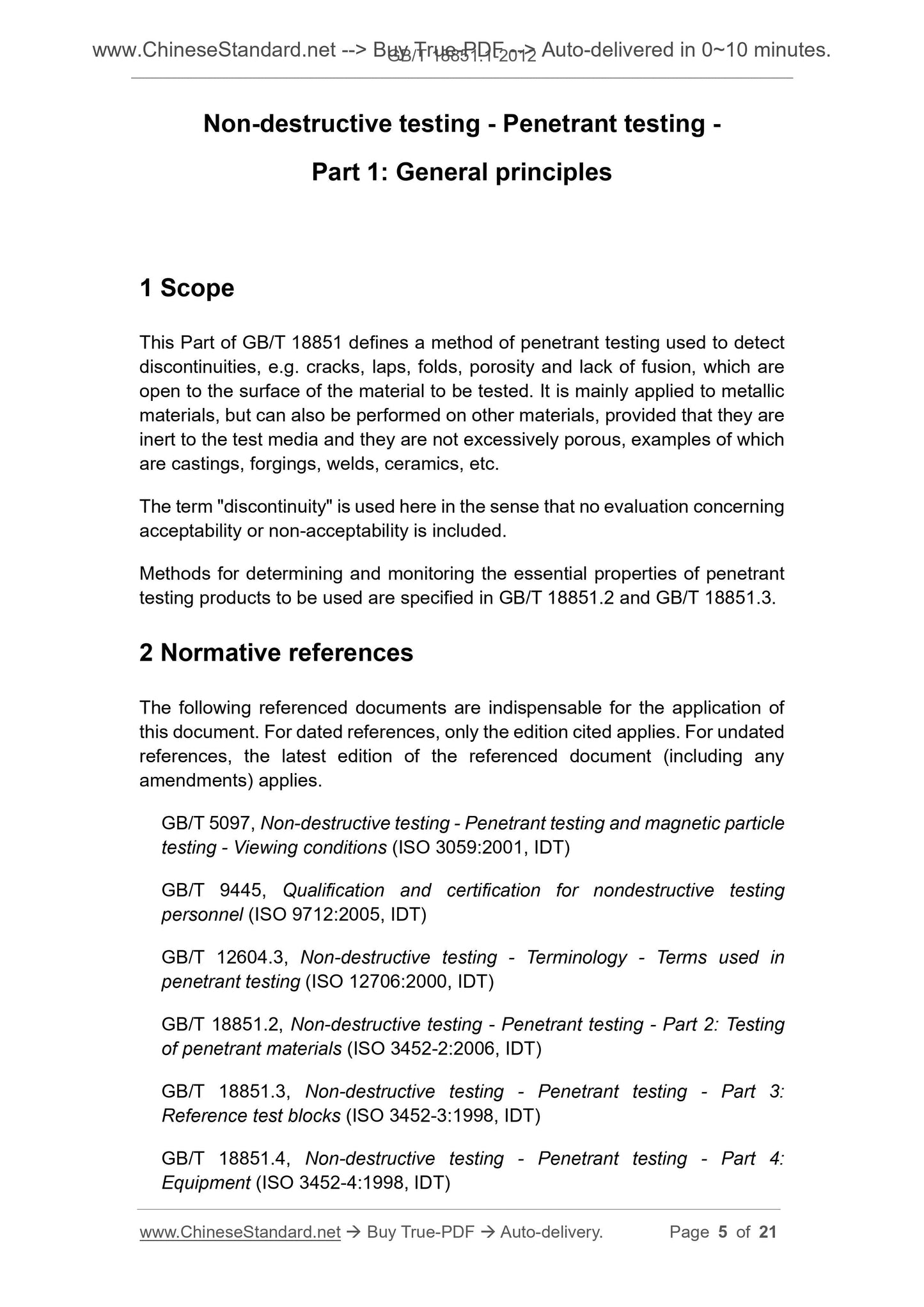1
/
of
5
www.ChineseStandard.us -- Field Test Asia Pte. Ltd.
GB/T 18851.1-2012 English PDF (GB/T18851.1-2012)
GB/T 18851.1-2012 English PDF (GB/T18851.1-2012)
Regular price
$145.00
Regular price
Sale price
$145.00
Unit price
/
per
Shipping calculated at checkout.
Couldn't load pickup availability
GB/T 18851.1-2012: Non-destructive testing -- Penetrant testing -- Part 1: General principles
Delivery: 9 seconds. Download (and Email) true-PDF + Invoice.Get Quotation: Click GB/T 18851.1-2012 (Self-service in 1-minute)
Newer / historical versions: GB/T 18851.1-2012
Preview True-PDF
Scope
This part of GB/T 18851 specifies the discontinuity of the surface opening of the tested material (eg cracks, heavy skin, folds, pores and notPenetration detection method for fusion, etc.). This method is mainly used for metal materials, but can also be used for other materials as long as these materials are not porous.
And it is inert with respect to the detection medium. Examples of the material to be inspected include castings, forgings, welds, ceramics, and the like.
The term "discontinuous" as used in this section includes all acceptable or unacceptable meanings that have not been assessed.
GB/T 18851.2 and GB/T 18851.3 specify the measurement and monitoring methods for the practical performance of penetration testing products.
Basic Data
| Standard ID | GB/T 18851.1-2012 (GB/T18851.1-2012) |
| Description (Translated English) | Non-destructive testing -- Penetrant testing -- Part 1: General principles |
| Sector / Industry | National Standard (Recommended) |
| Classification of Chinese Standard | J04 |
| Classification of International Standard | 19.100 |
| Word Count Estimation | 14,165 |
| Older Standard (superseded by this standard) | GB/T 18851.1-2005; GB/T 18851.5-2005 |
| Quoted Standard | GB/T 5097; GB/T 9445; GB/T 12604.3; GB/T 18851.2; GB/T 18851.3; GB/T 18851.4 |
| Adopted Standard | ISO 3452-1-2008, IDT |
| Regulation (derived from) | National Standards Bulletin No. 24 of 2012 |
| Issuing agency(ies) | General Administration of Quality Supervision, Inspection and Quarantine of the People's Republic of China, Standardization Administration of the People's Republic of China |
| Summary | This standard specifies a method for detecting surface opening was seized material discontinuities (such as cracks, heavy leather, folding, porosity and lack of fusion, etc.) penetration detection methods. This method is mainly used for metal materials, b |
Share
